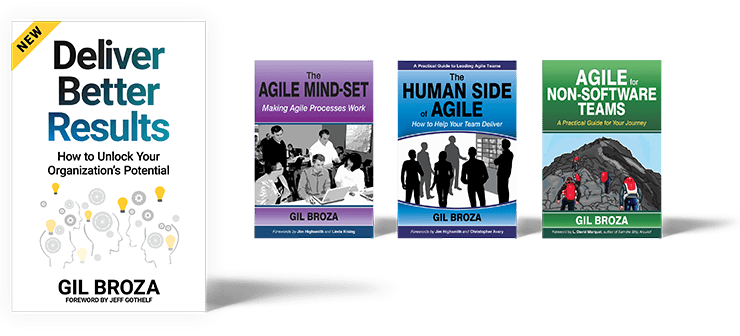Download the book’s supplementary resources
This page includes links to all the supplementary resources mentioned in the book, as well as any additions since the book came out. Feel free to download each and every one!
Before you start: Did you know that Gil leads a workshop based on the book? Join him to produce a viable, actionable, and efficient plan to level up product development. Details and registration/waitlist are here.
Chapter 1: The Big Picture
Fitness for Purpose Self-Assessment Questionnaire — The fitness assessment from Chapter 1 on a single page. As such, it doesn’t include the advice and examples regarding rating; make sure you read them in the book before using this questionnaire.
Summary of the Five Levels — A quick reminder of what happens at each fitness level, the highest risk to sustaining it, and the strategies for progressing to the next level.
Chapter 2: Understanding Systems of Value Delivery
Way of Working — The visual used in the book to show the elements of purpose, mindset, and tactics and how they relate to each other. Use it to enrich discussions and make effective choices about your system’s way of working.
Chapter 3: Leading Fitness Improvements
Proactive Behaviors for Leading Fitness Improvements — Execute the book’s 10 strategies more effectively and easily by making these proactive behaviors habitual (many of them will also make you a more effective leader in other contexts).
Chapter 5: Progressing from Level 1 to 2
Steps to Designing a Team Process — When executing step 3 (Determine tactics) of Strategy 1b (Design the way of working), use this sequence of steps to rationally design the team process.
Chapter 6: Progressing from Level 2 to 3
How to Stabilize a Value Delivery System — Use this quick reference guide to recall the book’s 13 ideas and principles for stabilizing your system.
Chapter 7: Progressing from Level 3 to 4
Workgroup, Team, or Agile Team? — A summary of the characteristics of each setup, the benefits of having teams rather than workgroups, and how to tell whether a team in your system is actually a team. Use this lens when examining why a team’s performance isn’t where it needs to be.
How to Make Real Collaboration Possible — If people aren’t collaborating nearly as much as they can — and not for lack of encouragement, opportunity, or tools — use this handy summary of the book’s process for making real collaboration possible.
Examples of Formulating Meeting Agendas as Questions — The book provides guidance on planning meetings worth having. This resource provides three examples for the least-familiar part of that guidance: crafting the agenda as a series of open questions that the attendees work through to produce their deliverables..
Chapter 8: Progressing from Level 4 to 5
Technical Cost of Change Self-Assessment Questionnaire — Get a quick, qualitative idea of the current cost. This information may help you start important conversations, secure cross-system commitment to reducing the cost, and see change over time.
Appendix A: Group Discussion Questions for Improvement Leaders
Group Discussion Questions — Amplify shared ownership and prepare to apply the book’s guidance by discussing these questions with your fellow improvement leaders.


